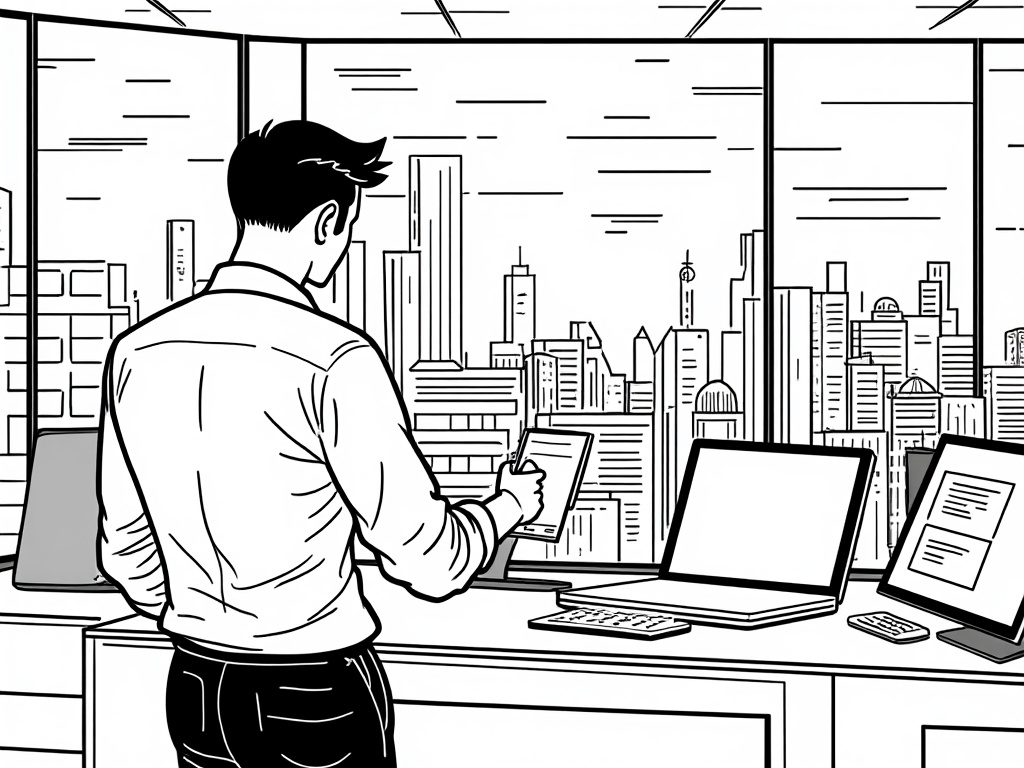
Sharjah Tourism: Discovering the Emirate’s Cultural Treasures and Strategic Vision
Reading time: 12 minutes
Table of Contents
- Introduction to Sharjah: The Cultural Capital
- Heritage and Cultural Attractions
- Natural Wonders and Outdoor Experiences
- Family Entertainment and Modern Attractions
- Sharjah’s Tourism Strategic Goals
- Success Stories: Transformative Tourism Initiatives
- Navigating Challenges in Sharjah’s Tourism Landscape
- Essential Visitor Tips for an Authentic Sharjah Experience
- Cultivating Tomorrow’s Cultural Haven: Sharjah’s Tourism Future
- Frequently Asked Questions
Introduction to Sharjah: The Cultural Capital
Feeling overwhelmed by the dazzling skyscrapers and luxury shopping malls of Dubai? You’re not alone. Just a short drive away lies Sharjah—an emirate that offers a refreshing alternative to the UAE’s more commercial destinations.
Recognized as the UNESCO Cultural Capital of the Arab World in 1998 and the UNESCO World Book Capital in 2019, Sharjah presents a compelling blend of authentic Emirati heritage and forward-thinking cultural innovation. This emirate isn’t simply living in the shadow of its flashier neighbors; it’s deliberately carving out its unique position in the region’s tourism landscape.
Let’s explore this straight talk: Sharjah isn’t trying to compete with Dubai’s extravagance or Abu Dhabi’s grandeur. Instead, it offers something perhaps more valuable—authenticity, depth, and a genuine connection to Emirati culture.
Heritage and Cultural Attractions
Museums and Historical Sites
Sharjah houses over 16 specialized museums—more than any other emirate in the UAE. This isn’t just a collection of buildings; it’s a deliberate cultural ecosystem designed to preserve and showcase different facets of Arab and Islamic heritage.
The Sharjah Museum of Islamic Civilization stands as a testament to the emirate’s commitment to education and cultural preservation. Housed in what was once a traditional souq on the waterfront, this museum displays over 5,000 artifacts spanning 1,400 years of Islamic history across various geographical regions.
Quick Scenario: Imagine walking through the science and technology gallery where ancient astronomical instruments reveal how Islamic scholars once mapped the stars and revolutionized mathematics. These aren’t just historical curiosities—they’re tangible connections to innovations that shaped our modern world.
The Sharjah Heritage Museum offers visitors an intimate glimpse into traditional Emirati lifestyle, from desert survival techniques to pearl diving traditions that sustained coastal communities for generations before the oil boom.
According to Dr. Zaki Aslan, Regional Director of ICCROM-ATHAR (International Centre for the Study of the Preservation and Restoration of Cultural Property): “Sharjah’s approach to cultural heritage preservation represents one of the most comprehensive models in the region, balancing conservation with education and community engagement.“
Arts and Cultural Districts
While many UAE destinations focus on importing international arts, Sharjah has invested in nurturing local and regional artistic expression.
The Sharjah Art Foundation and the triennial Sharjah Biennial have established the emirate as a serious contender in the global contemporary art scene. Unlike the more commercial art fairs in neighboring emirates, Sharjah’s approach emphasizes artistic depth and cultural dialogue over market value.
The Heart of Sharjah restoration project isn’t simply about preserving old buildings. This ambitious initiative aims to revitalize the historic core of the city by 2025, maintaining its authentic character while introducing contemporary functions. Walking through these narrow sikkas (alleyways) offers a genuine connection to the pre-oil era urban fabric that has largely disappeared elsewhere in the UAE.
Pro Tip: Visit the Heart of Sharjah during the cooler evening hours when local families gather, and the heritage buildings are illuminated, creating an atmosphere that authentically captures the community spirit of old Emirati neighborhoods.
Natural Wonders and Outdoor Experiences
Desert Landscapes
Sharjah’s natural landscape offers experiences that connect visitors to the emirate’s ecological diversity and traditional relationship with the land.
The Mleiha Archaeological Centre presents a distinctive approach to desert tourism—one focused on archaeological discovery rather than just dune bashing. This UNESCO-nominated site reveals human settlement dating back 130,000 years and offers experiences like fossil hunting and Bronze Age tomb exploration.
Practical Roadmap for Desert Exploration:
- Start with the interactive exhibition at the Mleiha Centre to understand the historical context
- Join an archaeological tour with expert guides who can identify ancient artifacts
- Experience sunset at Fossil Rock with uninterrupted desert views
- Conclude with stargazing sessions that connect to ancient astronomical traditions
Coastal Attractions
Unlike the highly developed coastlines elsewhere in the UAE, Sharjah’s eastern coast along the Gulf of Oman offers more pristine natural experiences.
The Khor Kalba Mangrove Centre provides access to the UAE’s oldest mangrove forest, home to rare species like the white-collared kingfisher. This ecological treasure represents Sharjah’s commitment to conservation alongside tourism development.
The beaches of Khorfakkan and Dibba Al-Hisn present visitors with swimming and snorkeling opportunities in waters significantly clearer than those of the Arabian Gulf side, with mountain backdrops that create dramatic coastal scenery found nowhere else in the UAE.
Family Entertainment and Modern Attractions
Sharjah balances its cultural emphasis with family-friendly entertainment options that maintain the emirate’s educational focus.
The Al Montazah Parks combine water attractions with themed amusement areas, while the Al Majaz Waterfront provides a community-oriented space where families can enjoy the spectacular musical fountain shows against the backdrop of the central mosque.
The Sharjah Aquarium and Maritime Museum complex takes visitors on a journey through the emirate’s deep connection to the sea, showcasing over 250 marine species native to the Arabian Gulf alongside traditional wooden dhows that once formed the backbone of the region’s trading networks.
Sharjah Visitor Attraction Comparison
85%
65%
70%
55%
20%
Based on visitor interest survey data from Sharjah Tourism and Commerce Development Authority, 2022
Sharjah’s Tourism Strategic Goals
Cultural Preservation and Promotion
Sharjah’s tourism strategy isn’t primarily focused on visitor numbers. Instead, it emphasizes meaningful engagement with the emirate’s cultural heritage and values.
His Highness Sheikh Dr. Sultan bin Muhammad Al Qasimi, Ruler of Sharjah, has repeatedly emphasized: “We are not in a race for numbers but in a journey to share our authentic culture and heritage with the world.“
This philosophy is evident in Sharjah’s selective approach to tourism development, which prioritizes:
- Educational tourism through museums and heritage sites
- Cultural festivals that showcase authentic Emirati traditions
- Architectural preservation that maintains the emirate’s distinct identity
- Ecological tourism that highlights environmental sustainability
Economic Diversification
While maintaining its cultural focus, Sharjah has set ambitious economic goals for its tourism sector. The Sharjah Commerce and Tourism Development Authority (SCTDA) aims to attract 10 million visitors by 2025—a strategic target that balances growth with sustainable development.
Unlike other emirates that have extensively developed their coastlines, Sharjah has taken a more measured approach to hotel and resort development, emphasizing quality over quantity and ensuring new properties complement rather than overwhelm the existing urban fabric.
| Tourism Parameter | Sharjah | Dubai | Abu Dhabi | Ras Al Khaimah |
|---|---|---|---|---|
| Primary Tourism Focus | Cultural Heritage | Luxury & Entertainment | Culture & Luxury | Adventure & Nature |
| Annual Visitors (2022) | 1.9 million | 14.7 million | 5.4 million | 1.1 million |
| Hotel Occupancy Rate | 70% | 76% | 68% | 63% |
| Number of Museums | 16+ | 7 | 12 | 3 |
| UNESCO Designations | 2 | 0 | 1 | 0 |
Success Stories: Transformative Tourism Initiatives
Sharjah Light Festival
The annual Sharjah Light Festival exemplifies how the emirate has successfully blended cultural celebration with modern artistic expression. Launched in 2011, this event transforms the emirate’s architectural landmarks through innovative light projections that tell stories of Sharjah’s heritage.
In February 2023, the festival attracted over 120,000 visitors across 11 days, generating an estimated economic impact of AED 111 million for local businesses. What makes this particularly notable is how the festival drives tourism during what was historically a shoulder season, demonstrating strategic event planning that addresses seasonal visitation patterns.
Mohammed Ali Al Noman, former Chairman of SCTDA, notes: “The Light Festival has become not just an artistic event but a catalyst for cultural tourism that showcases our architectural heritage through contemporary creative expression.“
Kalba Eco-Tourism Project
The eastern coast development of Kalba represents Sharjah’s distinctive approach to tourism development—one that prioritizes environmental preservation alongside visitor experiences.
This comprehensive project includes:
- The Khor Kalba Mangrove Centre protecting the UAE’s oldest mangrove ecosystem
- The Kalba Bird of Prey Centre focusing on conservation of indigenous raptors
- Carefully designed hiking trails through the Al Hafiya mountains
- Boutique eco-lodges that minimize environmental impact
Unlike mass tourism developments seen elsewhere in the UAE, the Kalba project demonstrates how Sharjah has successfully married conservation goals with sustainable tourism. Visitor numbers have grown by 35% annually since 2019, while the protected mangrove area has expanded by 12% during the same period.
Navigating Challenges in Sharjah’s Tourism Landscape
Balancing Tradition and Tourism
Sharjah faces the delicate challenge of maintaining its cultural authenticity while accommodating international visitor expectations. As the only emirate with a complete ban on alcohol consumption, Sharjah has deliberately positioned itself as a family-friendly destination that upholds conservative values.
While this cultural stance aligns with the emirate’s identity, it presents challenges in competing for certain tourism segments, particularly from Western markets accustomed to less restrictive environments. However, this apparent limitation has been strategically leveraged to attract visitors from the GCC and those seeking family-oriented experiences.
Tourism consultant Mariam Al Shamsi explains: “What might seem like a restriction has actually become Sharjah’s strength in certain markets. Many families from Saudi Arabia and Kuwait specifically choose Sharjah because of its conservative atmosphere and strong cultural identity.“
Seasonality and Climate Considerations
Like all Gulf destinations, Sharjah contends with extreme summer temperatures that significantly impact tourism patterns. With summer temperatures regularly exceeding 40°C (104°F), outdoor activities become challenging from June through September.
The emirate has addressed this challenge through:
- Development of indoor cultural attractions accessible year-round
- Strategic event scheduling during cooler months
- Focus on attractions in the eastern region where temperatures are moderated by mountains
- Promotion of summer cultural programs specifically designed for indoor venues
These approaches have yielded measurable results, with summer visitation increasing by 22% between 2018 and 2022, despite the challenging climate conditions.
Essential Visitor Tips for an Authentic Sharjah Experience
Navigating Sharjah effectively requires understanding both its cultural nuances and practical logistics. Here’s how to make the most of your visit:
Cultural Etiquette and Expectations
Sharjah maintains more conservative standards than neighboring emirates, which visitors should respect:
- Dress modestly in public areas—shoulders and knees should be covered for both men and women
- Observe photography etiquette—always ask permission before photographing local people
- Respect prayer times—many attractions may have brief pauses during prayer calls
- Understand shopping hours—stores typically close for afternoon breaks and reopen in the evening
Pro Tip: The most authentic cultural experiences often happen during evening hours when local families gather at places like Al Qasba or Al Majaz Waterfront. These locations offer a genuine glimpse into contemporary Emirati social life that feels far removed from the more tourist-oriented experiences elsewhere in the UAE.
Strategic Itinerary Planning
Sharjah’s attractions are more geographically dispersed than those in Dubai, requiring thoughtful planning:
Quick Scenario: A four-day visit might include:
- Day 1: Explore central Sharjah’s museums and Heritage Area on foot
- Day 2: Take a day trip to the east coast (Khor Fakkan and Kalba)
- Day 3: Visit the Mleiha Archaeological Centre and desert areas
- Day 4: Experience modern Sharjah at Al Majaz Waterfront and Al Qasba
This approach allows visitors to experience Sharjah’s diversity while minimizing transit time between attractions.
According to tourism data, visitors who spread their itinerary across different regions of Sharjah report 40% higher satisfaction rates than those who limit themselves to the central city area—highlighting the importance of experiencing the emirate’s full geographical diversity.
Cultivating Tomorrow’s Cultural Haven: Sharjah’s Tourism Future
Sharjah’s tourism trajectory isn’t simply about increasing visitor numbers—it’s about deepening cultural engagement while embracing sustainable innovation. Looking ahead, several key developments will shape the emirate’s tourism landscape:
Emerging Projects and Initiatives
The House of Wisdom, inaugurated in 2020, represents Sharjah’s forward-thinking approach to cultural spaces. This library and cultural center blends cutting-edge architecture with the emirate’s emphasis on knowledge and learning. Rather than simply housing books, it creates an interactive knowledge ecosystem that honors the Arab world’s historical contribution to science and literature.
The ongoing development of Sharjah Sustainable City demonstrates how the emirate is integrating environmental consciousness into its urban planning. This net-zero energy community will incorporate tourism components that showcase sustainable living practices, potentially establishing Sharjah as a destination for ecological education.
The Sharjah Safari Park in Al Dhaid—the largest safari outside Africa—is positioning the emirate as a leader in conservation-focused wildlife tourism. Unlike traditional zoos, this 2,000-hectare project recreates natural habitats for over 50,000 animals with an emphasis on educational experiences about wildlife preservation.
Your Personalized Sharjah Discovery Framework
Ready to experience Sharjah’s cultural richness beyond the standard tourist path? Consider this actionable roadmap:
- Engage with living heritage through immersive workshops at the Sharjah Institute for Heritage where you can learn traditional crafts from Emirati artisans
- Discover literary Sharjah by timing your visit during the annual International Book Fair—the world’s third-largest
- Connect with contemporary creativity at the Sharjah Art Foundation’s year-round exhibitions and community programs
- Experience ecological diversity through guided tours of protected areas like the Wasit Wetland Centre
- Taste authentic Emirati cuisine at local restaurants like Fen Café or Al Fanar rather than international chains
The question isn’t whether you should visit Sharjah, but rather: How will you engage with this cultural treasure beyond the surface level that most tourists experience?
As global travelers increasingly seek authentic connections and meaningful experiences, Sharjah’s deliberate emphasis on cultural depth and heritage preservation positions it uniquely within the regional tourism landscape. While it may never attract the sheer numbers of visitors that Dubai does, its focus on quality over quantity creates a more sustainable and potentially more rewarding tourism model for both visitors and residents.
Frequently Asked Questions
How does Sharjah’s tourism differ from other emirates in the UAE?
Sharjah distinguishes itself through its primary focus on cultural and heritage tourism rather than luxury or entertainment. As the Cultural Capital of the Arab World, Sharjah offers over 16 specialized museums, heritage districts, and archaeological sites that provide deeper historical context than other emirates. It maintains a more conservative atmosphere (including a complete alcohol ban) and emphasizes family-friendly attractions. Unlike Dubai’s commercial approach or Abu Dhabi’s grand cultural institutions, Sharjah focuses on authentic Emirati traditions, ecological preservation, and educational tourism experiences that connect visitors with the region’s pre-oil history and indigenous culture.
What is the best time to visit Sharjah for optimal experiences?
The ideal period to visit Sharjah is between November and March when temperatures range from 15-30°C (59-86°F), making outdoor exploration comfortable. This period coincides with Sharjah’s peak cultural season, featuring the International Book Fair (November), Light Festival (February), and various heritage festivals. The shoulder seasons of October and April offer good weather with fewer crowds and potentially lower accommodation rates. Summer months (June-September) bring challenging temperatures exceeding 40°C (104°F) but can be navigated by focusing on indoor attractions like museums and cultural centers, often with seasonal discounts and special programs designed specifically for the indoor environment.
Are there any specific cultural guidelines visitors should observe in Sharjah?
Sharjah maintains more conservative standards than neighboring emirates, and visitors should respect these cultural norms. Dress modestly in public areas with shoulders and knees covered—this applies to both men and women. Public displays of affection should be avoided. Photography restrictions apply at government buildings, airports, and some cultural sites, and it’s always respectful to ask permission before photographing local people. During Ramadan, eating, drinking, or smoking in public during daylight hours is prohibited. Alcohol is completely banned throughout the emirate, including in hotels. Many attractions observe brief pauses during prayer times, especially on Fridays. Respecting these guidelines ensures a harmonious visit while honoring the emirate’s cultural values.

Article reviewed by Anastasia Petrov, Golden Visa Specialist | Free Zone Arbitrage, on May 15, 2025




